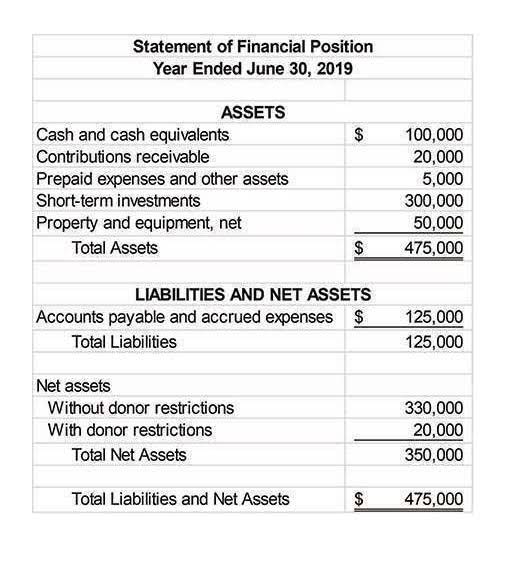
This can help stabilize cash flow and make it easier to plan for the future. Anything that can be turned into cash quickly is considered a current asset. In this case the note receivable is issued to replace an amount due from a customer currently shown as accounts receivable. Yes, transactions with related parties (e.g., subsidiaries, affiliated companies, key executives) require specific disclosures to ensure transparency and prevent conflicts of interest. These disclosures typically include the nature of the relationship, the terms of the notes, and the amounts outstanding. A discounted note receivable is a note sold before its maturity date, typically at a discount to reflect the time value of money and the buyer’s desired rate of return.
- For the past 52 years, Harold Averkamp (CPA, MBA) hasworked as an accounting supervisor, manager, consultant, university instructor, and innovator in teaching accounting online.
- Contrast that with a piece of equipment that is much more difficult to sell.
- While accounts receivable represent unpaid invoices that can be disputed, notes receivable are written promises that courts more readily enforce.
- IFRS and ASPE standards both allow NRV to approximate the fair value, since the interest component is immaterial when determining the present value of cash flows for short-term accounts receivable.
What Type of Account is Interest Income?

The maker is obligated to pay both the principal trial balance amount and the interest as compensation for the extended payment period. Accounts receivable refers to the money owed to a company by its customers for goods or services provided on credit. In comparison, a note receivable is a loaner’s written promise to pay a specified amount at a specified date, typically with interest. The key difference between the two is that an accounts receivable does not involve a formal written agreement, while a note receivable does.
Accounts Payable vs. Notes Receivable
This classification ensures an accurate representation of the asset’s value on the balance sheet. It distinguishes between amounts expected to be realized within the next operating cycle (current assets) and those not expected to be realized within that timeframe (noncurrent assets). Have you ever extended credit to a customer and received Bookkeeping vs. Accounting a formal promise to repay in return? If so, you’re holding a note receivable, a valuable asset for your business. This article explains how notes receivable are categorized depending on their repayment timeframe.
How notes receivable and accounts receivable impact cash flow
As discussed earlier, a note (also called a promissory note) is an unconditional written promise by a borrower to pay a definite sum of money to the lender (payee) on demand or on a specific date. A customer may give a note to a business for an amount due on an account receivable, or for the sale of a large item such as a refrigerator. A note receivable represents the right to receive future payments from a debtor, making it an asset account on the balance sheet. However, for any receivables due in less than one year, this interest income component is usually insignificant.
- When a note receivable originates from an overdue receivable, the payment tends to be relatively short – typically less than one year.
- However, for any receivables due in less than one year, this interest income component is usually insignificant.
- Sellers often offer trade discounts to customers to adjust the sales prices of items listed in the catalogue.
- As was illustrated for the percentage of accounts receivable method above, the calculation of the adjusting entry amount must consider whether the unadjusted AFDA balance is a debit or credit amount.
- Throughout the following year, the allowance account can be directly debited each time customers take the discounts and is adjusted up or down at the end of each reporting period.
- This article covers the recognition, initial and subsequent measurement, interest calculation, impairment, presentation, and disclosure of notes receivable, with references to U.S.
Create a free account to unlock this Template
- The standard suggests using either the expected value (a weighted average of probabilities), or the “most likely amount” to estimate sales discounts, perhaps based on past history.
- When a promissory note is accepted, it is accounted as a note receivable, which becomes a current asset if it is a short-term or a payment that shall be paid within one year.
- Amounts owed to the company by customers that are typically due within a short period.
- Note that for this method, the previous balance in the AFDA account is not taken into consideration.
However, in this case, the restaurant only recently opened, and a consistent cash flow has yet to be established. The restaurant requests an extended payback, and the supply store issues a promissory note with very specific terms. These include a one-year maturity date with eight percent interest accrued over the term. Cash is received, increasing cash flow and improving the company’s liquidity. Accounts receivable, like notes receivable, impact cash flow by delaying the receipt of cash from customers.
Note that the interest component decreases for each of the scenarios even though the total cash repaid is $5,000 in each case. In scenario 1, the principal is not reduced until maturity and interest would accrue over the full five years of the note. For scenario 2, the principal is being reduced on an annual basis, but the payment is not made until the end of each year. For scenario 3, there is an immediate reduction of principal due to the first payment of $1,000 upon issuance of the note. The remaining four payments are made at the beginning instead of at the end of each year.
- Just like traditional liquid assets trading across various products and services, such as securities or credit accounts held by businesses.
- They’re shown in the shareholder’s balance sheet as the current assets if the note is due within one year; else, they will be shown under the now-current head in the balance sheet if the note is due after one year.
- The order in which these accounts appear might vary because each business can account for the included assets differently.
- Also, the company may be able to sell the note to a bank or other financial institution.
- It is a common practice for businesses globally to purchase or sell on credit.
Balance

A closely related topic is that of accounts receivable vs. accounts payable. The payee of a note receivable is the company or individual expected to receive payment from the debtor. Unlike accounts receivable, which are usually paid off within one year, a note receivable can have time to pay that extends beyond the year of the balance sheet date. Companies must recognize the interest portion of payments they receive on notes receivable.

Accounting Dictionary
The sum of all the estimated uncollectible amounts by group represents the total estimated uncollectible accounts. Just like the percentage of accounts receivable method previously discussed, the estimated amount of uncollectible accounts using this method is to be equal to the ending are notes receivable current assets balance of the AFDA account . The adjusting entry amount must therefore be whatever amount is required to result in this ending balance.
